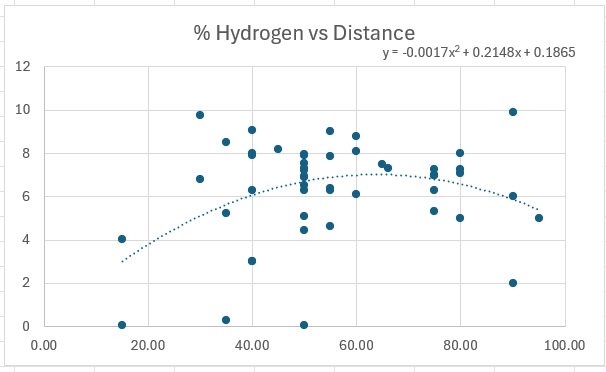7 Catchy Phrases to Communicate Effectively with Your Chemistry Students
- Brennan Koch
- Mar 31, 2023
- 4 min read
MFEO. Teachers and catch-phrases are just that; Made For Each Other. And yes, I’m a male in my mid-forties who just quoted “Sleepless in Seattle”. Sheesh. But as we spend more time in the classroom, we add these collections of little phrases, concepts, or pictures that help us communicate effectively about complicated chemistry topics. These can help students understand concepts, remember ideas, or connect to their real-life situations. You already know your favorites. I will put a few of mine down here, and then we can all share our bits of cringeworthy creativity.

1. MFEO
I actually do use this when I first start teaching ionic bonding to grade level chemistry students. When we begin looking at the transfer of electrons from the metal to the nonmetal, I refer to atoms that bond in a one to one ratio as MFEO. How does magnesium become stable? Lose two electrons. Sulfur? Gain two electrons. They are MFEO because all atoms want to become more stable.
2. The Jesus Answer
I’ve had the privilege of teaching in Christian schools for 20 years. All of my students know that when you are little and the Sunday School teachers asks a question, there is a good chance the answer is “Jesus”. Chemistry is a lot the same way. It seems that the answer to any “why” question in chemistry is “To become more stable”. So that is our Jesus Answer. Why did that bond form? To become more stable. Why does oxygen lose two electrons? To become more stable. Why are exothermic reactions thermodynamically favorable? To become more stable. And on and on it goes.
3. Breaking Takes and Making Makes
I use this little rhyme to help my AP students remember how bond enthalpy works. Breaking bonds requires energy. Forming bonds releases energy. And yes, I know my phrase sounds like I’m breaking the first law of thermodynamics. Making bonds doesn’t make energy. But it rhymes way better that “making releases”.
4. The 7
When helping students remember the seven diatomic elements, we simply refer to them as “The Seven”. They start at number 7 (nitrogen) on the periodic table. They make the shape of a 7. Nitrogen, oxygen, fluorine across the top and then down with chlorine, bromine and iodine. And there are 7 of them. This helps us to remember to add poor hydrogen into the group. 7-7-7. Start at 7, make the shape of a 7, and there are 7.
5. The Metric-English Doorway
When I first start using dimensional analysis with the first-year chemistry students, we talk about the metric-English doorway. Out in the hall, people speak English. Inside the science classroom, we speak metrics. Therefore, to move from metric to English or vice versa, you must walk through the doorway. Then we memorize the two doorways. 1 pound = 454 g. 1 inch = 2.54 cm. When I teach dimensional analysis, we only use those two doorways to move from metric to English. They start to get the visualization of changing units to reach the doorway, then using the doorway, then changing units within the other system.
6. The Mole Kingdom
I already wrote another blog about the picture of the mole kingdom that explains it in more detail. This visual is particularly helpful for the lower students that struggle to comprehend dimensional analysis within stoichiometry. The summary is this. The Mole Kingdom sits in the middle of the kingdom surrounded by a moat. On the outside is Particle Land, Mass Land, and Gas Land. In order to move from Gas Land to Mass Land you must first pass through the Mole Kingdom. This gives them the visual reminder that we must leave gases by dividing by 22.4L at STP, then form a mole ratio within the Mole Kingdom, and then leave the Kingdom into Mass Land by multiplying by molar mass. It’s silly but helps some kids.
7. The Move
This is the latest one that I have been adding to my repertoire. Kids would ask me what to do next on a particular problem. And they would just stare at me even more when I suggested that they use dimensional analysis to find the limiting reagent. Once the light went on for them, they would say something like “Oh, you mean the little fraction thing?” Yes. The little fraction thing. So I’m trying to brand dimensional analysis as “The Move”. Once you get the balanced equation, you need to do the move. We will see how this one goes.
I’m sure that there are so many more that I use, and don’t even think about. And you have even more than that. Let’s work together and share ideas. Post yours in the comments or on social media. After all, we chemistry teachers were MFEO.
We are excited to announce that Stoich Decks now has Up & Atom (to teach the mole) and CHeMgO (to teach ionic formulas) in stock and for sale as a Complete Classroom Set. You can connect to your kids in a unique way through games on two very fundamental areas through games that actually designed to be part of your curriculum and not just a time waster. Get the Complete Classroom Set, which is enough for 30 students per period, at a reduced rate.





Comments